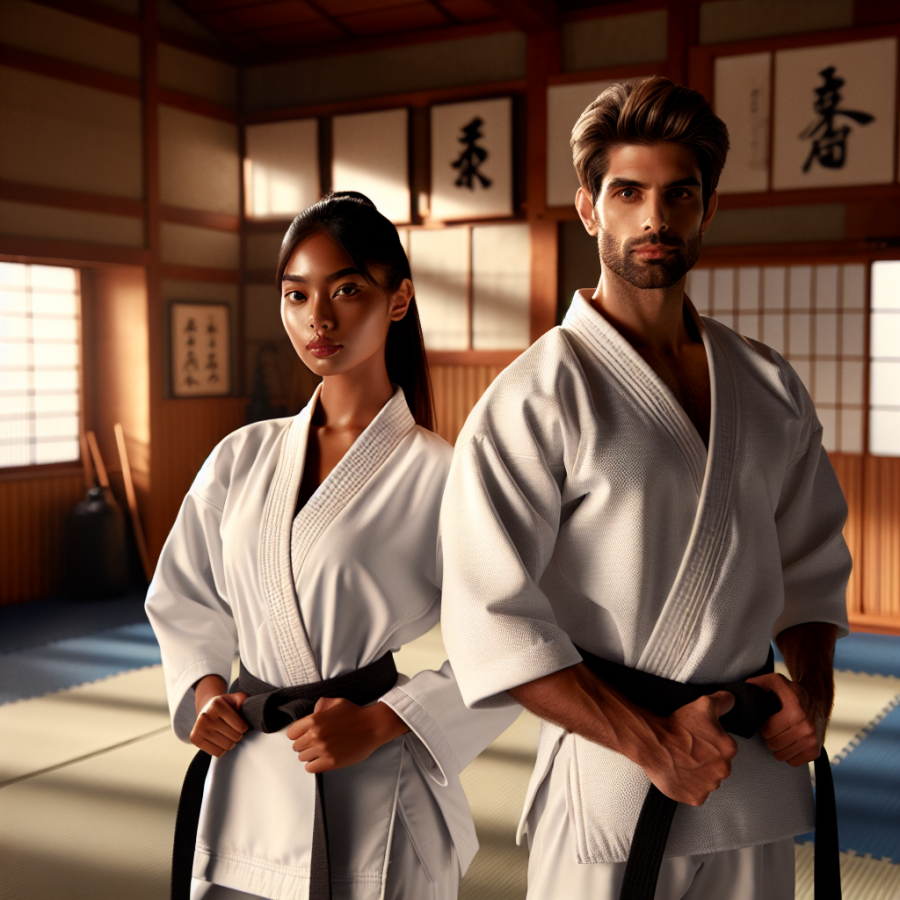Tracing the Historical Journey of Karate: From Okinawa to the World
Karate, a martial art form which is now popular all over the world, was first developed in the Ryukyu Kingdom before it was transformed and modernized in mainland Japan. Over many centuries, this historical martial art discipline has widely influenced the world of combat, self-defense, and fitness, gaining worldwide recognition and a massive following.
The birthplace of karate is believed to be Okinawa, an island that was once part of the Ryukyu Kingdom, now part of present-day Japan. Okinawa was an important trade center with much interaction between it and other Asian kingdoms. It was in the late 14th century that distinct fighting styles began to emerge in Okinawa, influenced by Chinese martial arts, due to the close trading relationships between the Ryukyu Kingdom and China.
These early styles of martial arts were known as “te” or “tudi”, and they were practiced in small communities across the island. It was a secretive art form at this time, mainly because its practice was initially banned by local authorities who perceived it as a threat. Students of these early fighting styles were taught in secret, often late at night and usually only had one teacher throughout their entire training.
Over time, these eclectic fighting styles began to amalgamate, and eventually, they were collectively referred to as Okinawa-Te or Okinawan hand. By the 18th century, Okinawa-Te had evolved into a more refined form, encompassing both fighting techniques and spiritual principles. This was a precursor to the discipline we now recognize as karate.
The Okinawan martial art form began to change once again in the late 19th and early 20th centuries when it was introduced to mainland Japan. Gichin Funakoshi, an Okinawan schoolteacher and student of Okinawa-Te, is often credited with popularizing karate in mainland Japan. He transformed the discipline to make it more palatable to the Japanese and presented it as a way to develop physical fitness, discipline, and character, aligned with Japanese Bushido – the way of the warrior.
The name itself, "Karate", was coined in the 1930s. Until then, the discipline was referred to as “Chinese hand.” Wanting to dissociate the discipline from its Chinese roots and to emphasize its Japanese character, Funakoshi changed the kanji sign for Kara from "Chinese" to "empty" - transforming it into "empty hand.
Read also:
The Intriguing World of Mixed Martial Arts (MMA): Understanding Its Techniques and Culture
The Significant Influence of Karate on Global Culture and Sportsmanship
Karate, a discipline rich in history, has over time greatly influenced global culture and sportsmanship. Evolving from its origins in Okinawa, the presence of Karate is now well-established in every corner of the globe.
One of the endearing features of Karate is its emphasis on balance, synchronization, rhythm, and precision, which played a significant role in its influence over international sporting games. Today, it enjoys a respected and recognized place in major international sporting events such as the Olympics. Its inclusion in the Tokyo 2020 Olympics is testament to Karate's growing recognition as a prominent global sporting discipline, demonstrating its influence on sportsmanship.
Yet, the influence of Karate stretches beyond mere sportsmanship and competition. It permeates cultural spectrums, entwining itself with various art forms, such as the film industry. Karate-based martial arts movies have boosted its global popularity while reinforcing its status as a mystique of the East. Hollywood productions, including the iconic Karate Kid series and the recent Cobra Kai, played critical roles in pictorially narrating Karate while promoting its underlying tenets of honor, respect, and discipline.
In the realm of spirituality and wellness, Karate’s emphasis on discipline and self-control appeals to a broad demographic regardless of age, nationality, or gender. This martial art form promotes a holistic form of wellness that combines mental toughness with physical agility, in turn fostering a sense of spiritual well-being.
The essence of Karate, which espouses moral codes such as integrity, courage, respect, and humility, also impacts societies and social structures. As such, it has influenced educational policies, with many schools across the globe incorporating martial arts programs, like Karate, into their curriculum.
In terms of fashion and design, the Karate Gi has influenced international fashion trends. This traditional uniform, known for its simplicity, comfort, and durability, has inspired numerous high-end fashion lines and streetwear brands globally.
Commercially, businesses have capitalized on its global fandom to market an array of Karate-based merchandise - from action figures, video games, board games, clothing, and home decor. This commercialization continually fuels Karate's global popularity, confirming its influential stance on global culture.
Karate's influence extends to literary works as well. Numerous self-help, teenage fiction, and autobiographical books are replete with references to, or inspirations from, this martial art.




